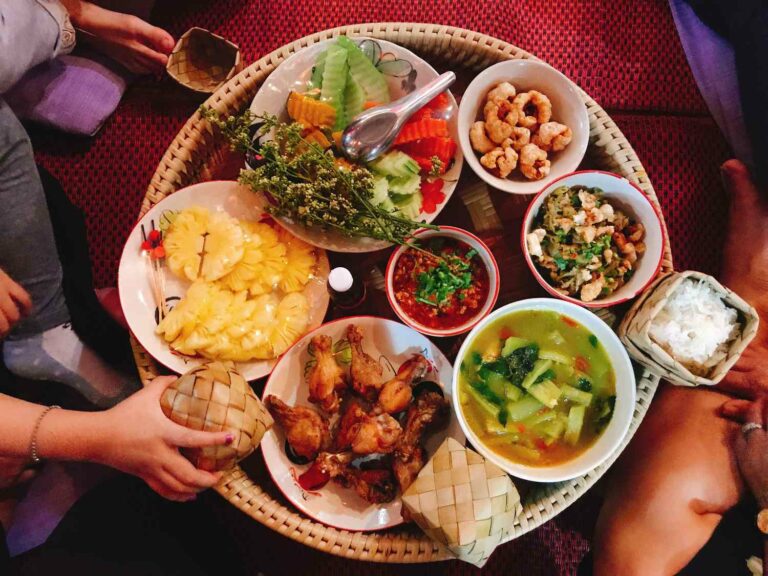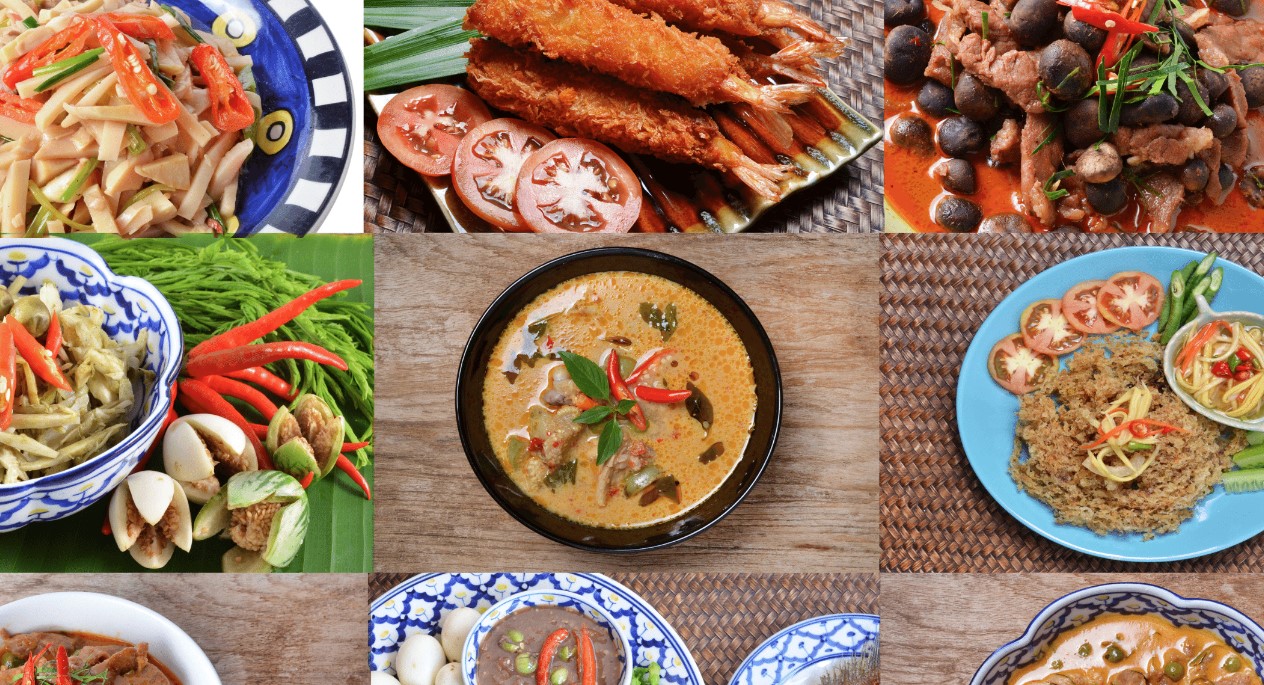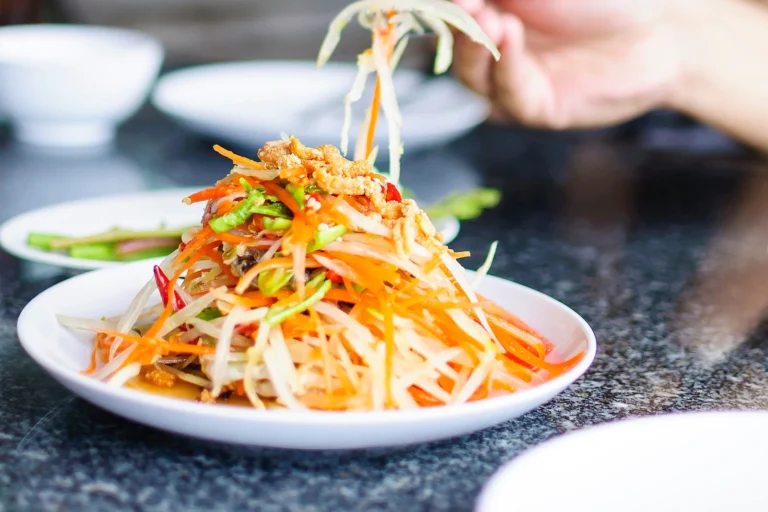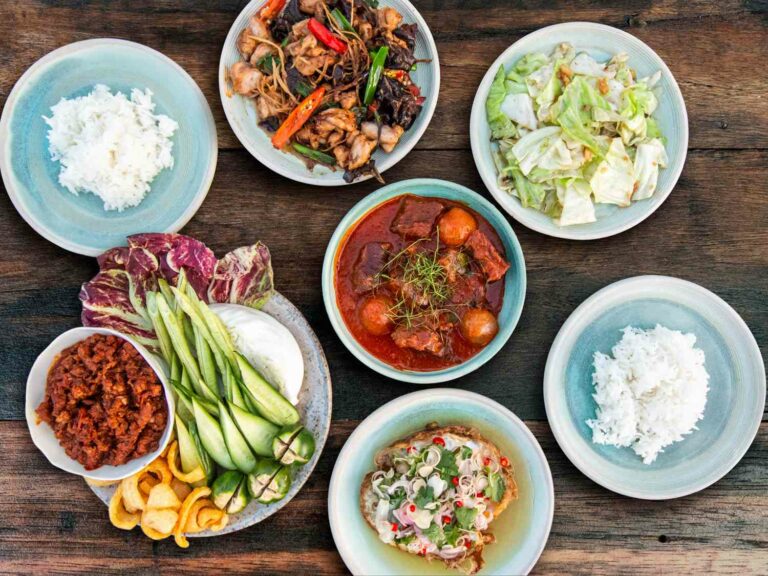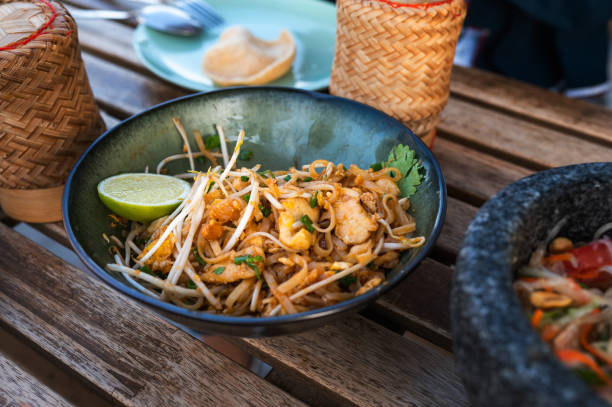Introduction: The Unique Blend of Thai Cuisine
Thai cuisine is renowned for its distinct flavors, vibrant colors, and unique blend of sweet, salty, sour, and spicy tastes. The cuisine has evolved over the centuries, drawing influences from various cultures and regions. One of the most significant influences on Thai cuisine has been the Chinese and Indian flavors, which have contributed to the development of several dishes and cooking techniques that are popular in Thailand today.
Historical Background: The Influence of Chinese and Indian Flavors
The influence of Chinese and Indian flavors on Thai cuisine can be traced back to the 13th century, when the kingdom of Sukhothai was established in present-day Thailand. The Chinese traders who came to Sukhothai brought with them their culinary traditions, including the use of soy sauce, oyster sauce, and tofu. The Indian traders, on the other hand, introduced spices such as cardamom, cumin, and coriander, which were used in curries and other dishes.
Key Ingredients: The Commonalities and Differences
Several ingredients used in Thai cuisine have a Chinese or Indian origin. For example, soy sauce is used in many Thai dishes, including stir-fries and marinades, while oyster sauce is a key ingredient in dishes such as Pad See Ew and Kai Jeaw Moo Sub. Indian spices such as turmeric, cumin, and coriander are used in Thai curries, such as Massaman Curry and Panang Curry. However, Thai cuisine also has its unique ingredients, such as lemongrass, galangal, and kaffir lime leaves.
Cooking Techniques: The Fusion of Culinary Traditions
The cooking techniques used in Thai cuisine are a fusion of Chinese and Indian culinary traditions. Stir-frying, for example, is a Chinese technique that is commonly used in Thai cuisine, while Indian techniques such as slow-cooking and simmering are used in Thai curries. Deep-frying, which is popular in Chinese cuisine, is also used in Thai dishes like Tod Mun Pla (Thai fish cakes).
Regional Variations: The Diverse Flavors of Thailand
Thailand is a diverse country, with each region having its unique flavors and culinary traditions. For example, the cuisine of the north is heavily influenced by Chinese and Burmese flavors, while the cuisine of the south is influenced by Indian and Malay flavors. These regional variations have contributed to the development of several unique dishes such as Khao Soi (a northern-style curry noodle soup) and Massaman Curry (a southern-style curry with Indian influences).
Popular Thai Dishes with Chinese and Indian Influences
Some of the most popular Thai dishes with Chinese and Indian influences include Pad Thai (a stir-fried noodle dish with peanuts and bean sprouts), Tom Yum (a spicy and sour soup with shrimp or chicken), and Green Curry (a spicy curry with chicken, beef, or tofu). These dishes showcase the unique blend of flavors and culinary traditions that have shaped Thai cuisine over the centuries.

